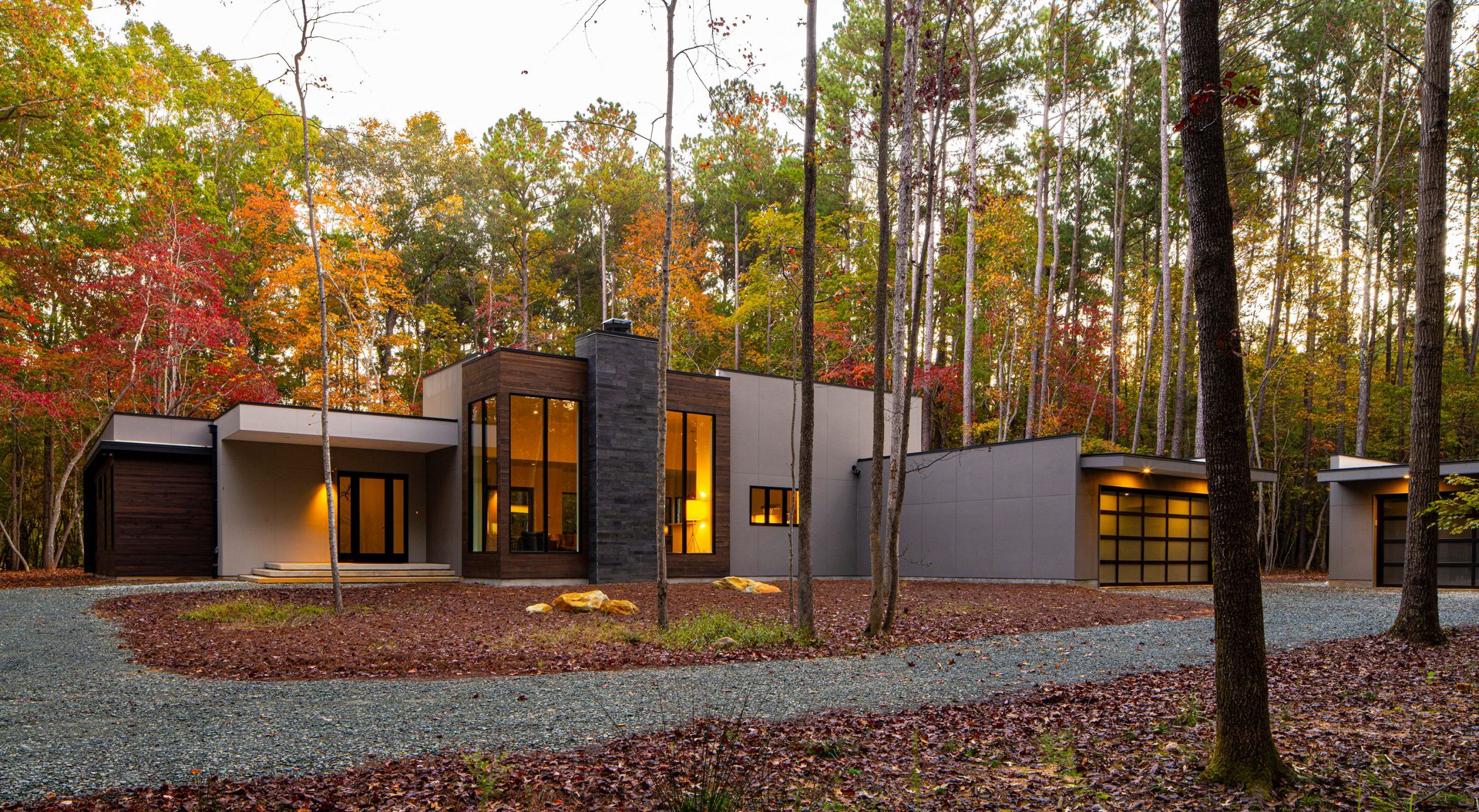Höweler + Yoon’s Memorial to Enslaved Laborers on the Grounds at the University of Virginia draws on the relatively recent evolution of design for monuments in the landscape.
For starters, it looks back to the 1982 Vietnam Veterans Memorial on the National Mall in Washington, D.C.
“Maya Lin changed memorials forever, out of representative space to abstractive space,” says architect Eric Höweler. “Here, the form is a kind of beautiful land form with a cone – and outside, another cone.”
Their circular design also references Jefferson’s Rotunda, rising from the Lawn nearby. “The footprint is 80 feet in diameter, the same as the Rotunda – a counter-figure to Jefferson’s dome,” he says.
The memorial is circular for another reason – it’s a gesture toward night-time gatherings by 19th-century slaves. They grouped together in clearings in the woods, where they could sing, worship and talk freely, away from their masters.
The circular form drops a foot and a half into the earth, while its enveloping stone ring rises another seven feet. “As you walk into it, it creates a new horizon – you encounter an eight-foot wall,” he says. “The context drops away and you’re confronted with 4,000 spaces for names.”
About 600 names and another 400 identifiers like “Mother” and “Sister,” along with artisan titles like “Mason” and “Seamstress,” are engraved into the memorial wall. Three thousand blank placeholders mark unidentified names of slaves who worked on the Grounds. “It’s an open-ended memorial,” he says. “It’s specifically unfinished and unknowable – because some people didn’t have names, and there was no record.”
The stone is a Virginia Mist Granite, quarried in nearby Culpeper, Va. Carved into it will be the eyes of Isabella Gibbons, a freed slave who later earned her degree and educated other free blacks in Charlottesville.
A water feature flows alongside seating, offering visitors both libation and liberation. “You sit on the bench and put your hand in the water, and it’s cleansing,” he says. “There’s a gurgling sound that’s animated, and it complements the somberness of the memorial.”
Its landscape design – by gifted Charlottesville landscape architect Gregg Bleam – includes a stand of native honey locust trees.
Ultimately, when it opens on April 11, 2020, the memorial will seek to change how people think about the concept of enslavement – and those who were slaves. “We’re trying to remember people who have been explicitly forgotten, and that’s intellectually and socially challenging,” he says. “They [slave owners] were thinking of slaves not as humans, but as something else. It was a coping mechanism for what they were doing at the time.”
With its groundbreaking memorial, Höweler + Yoon has created an experience that will engage people on a radically different plane. “It’s really powerful,” he says. “It gives you the capacity to contemplate. It’s a semi-enclosure that allows you to focus.”
And, one would hope, to heal.
For more, go here.
[slideshow id=2068]


